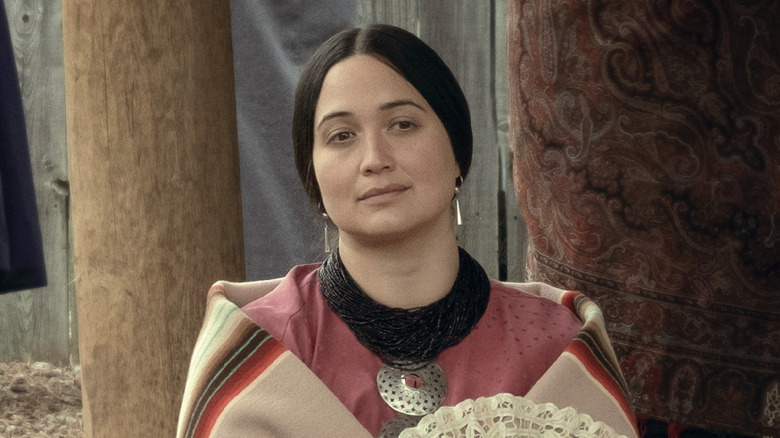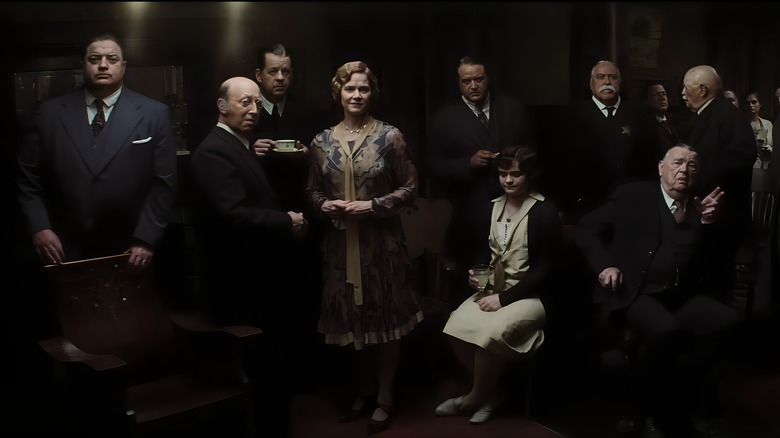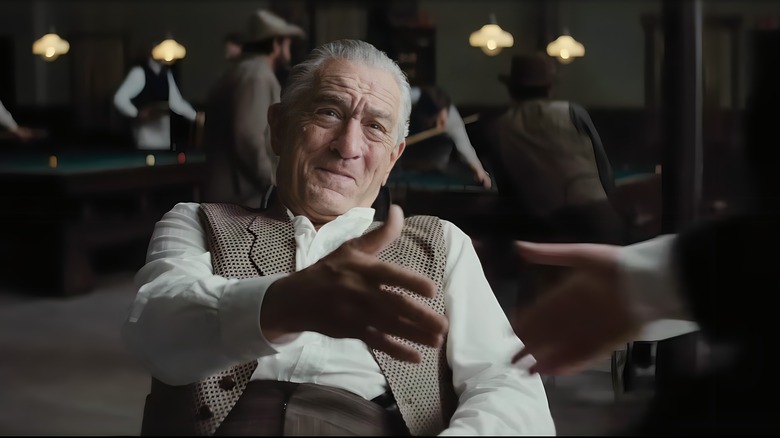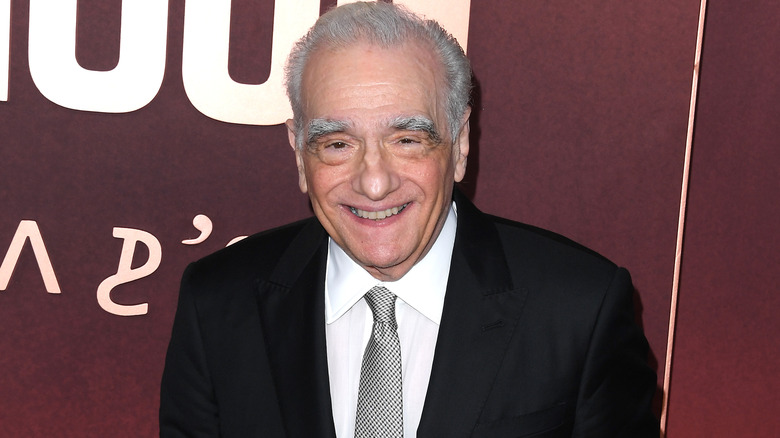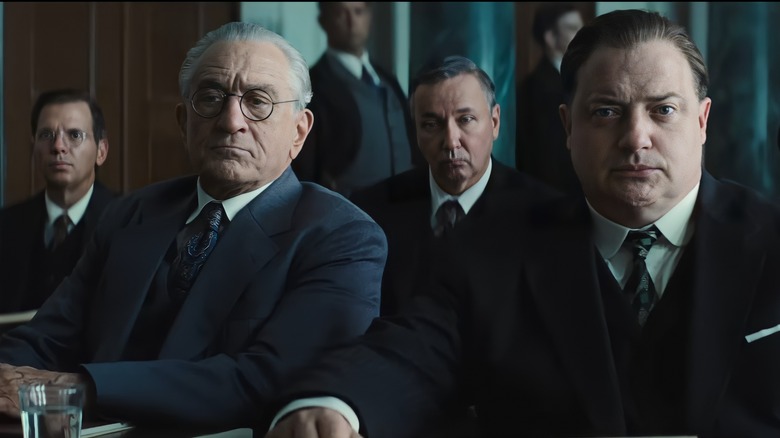Killers Of The Flower Moon And Goodfellas: 5 Eerie Similarities You Likely Missed
Though director Martin Scorsese has made a career out of bringing all kinds of different tales to the big screen, the director is best known for his crime movies. While some focus on the lives of desperate men turning to the dark side, like "Taxi Driver" and "The King of Comedy," others like "Shutter Island" and "The Departed" take well-worn tropes of psychological terror or corrupt cops and turn them on their heads.
The latest from the filmmaker is "Killers of the Flower Moon." Based on the murders of Native American people from the Osage Nation that took place in Oklahoma in the 1920s, the film charts yet another reckoning with American history as it has commonly been told, peeling back the layers of respectable society to show the dark underbelly lurking in the shadows.
However, "Killers of the Flower Moon" also has a lot in common with another Scorsese film, "Goodfellas." Aside from directing both films, the legendary filmmaker also worked as a co-writer on the two movies, which is much more rare. As it stands, Scorsese currently holds dozens of directing credits but far fewer writing credits, many of which were much earlier in his career. That's just the tip of the iceberg, however, in terms of what the two projects have in common.
The two stories are inspired by real-life crimes
One major thing that connects "Killers of the Flower Moon" to "Goodfellas" is that both are based on a true stories. Though there's a gap of a few decades between where the two tales begin, both are well-documented, largely accurate representations of the real-life criminals, victims, and events at the heart of them. In fact, the two stories are also explicitly based on true crime books.
"Wiseguy" by Nicholas Pileggi is the inspiration for "Goodfellas," right down to being told from Henry Hill's (Ray Liotta) point of view. The book traces over three decades of his life in organized crime, including his role in the infamous Lufthansa heist. Meanwhile, "Killers of the Flower Moon" is based on the book of the same name by David Grann, which recounts the murders of at least 20 Osage people (and possibly many more) to obtain ownership of their oil claims.
Paul Cicero (Paul Sorvino) and Jimmy Conway (Robert De Niro) of "Goodfellas" see themselves as outside of the law, too clever and wealthy to ever see any real consequences for their crimes. The same goes for William Hale (De Niro) and Ernest Burkhart (Leonardo Dicaprio) in "Killers of the Flower Moon." Both sets of criminals operate out in the open and do so with the approval and even the aid of local community members.
William Hale has a lot in common with Jimmy Conway
While it's an obvious connection that Robert De Niro stars in both films, it's the similarities between Jimmy Conway and William Hale that really nail down the commonalities between "Goodfellas" and "Killers of the Flower Moon." Both characters are charming, friendly, professional, and cordial up front, but dangerous, calculating killers behind closed doors.
They come as friends, smiling and shaking hands with their criminal co-conspirators, only to have them murdered in cold blood mere hours or days later. They have no compunction about having longtime friends and associates killed and seem to shrug off the guilt of all that they've done effortlessly. They look on coldly, showing no remorse whatsoever for all of the horror that they're responsible for. They think their wealth and status puts them well outside the realm of being held accountable for dozens of murders and other crimes.
Hale and Conway are also able to come across as very loving and fatherly to characters like Karen Hill (Lorraine Bracco) and Mollie Burkhart (Lily Gladstone) respectively, even as they're in the midst of planning their deaths. Of course, all of their cold calculations and secondhand bloodletting do inevitably catch up with them despite their seemingly endless confidence that this will not be the case. Just as they can turn so quickly on those who they once claimed to hold dear, so too can those around them pull the same trick.
Both films feature Scorsese family cameos
While Martin Scorsese has worked behind the camera for decades, he rarely appears in the frame himself, especially in his own movies. Still, the renowned filmmaker makes a cameo at the end of "Killers of the Flower Moon" as a radio show producer who offers a bleak synopsis of the events that followed the crimes depicted in the film.
Though major fans will recall that Scorsese also had cameos in "Taxi Driver" and "The Aviator," it was a different Scorsese who appeared in "Goodfellas." When Tommy DeVito (Joe Pesci) tries to sneak into his mom's house for some supplies to help dispose of a body, he's caught by his mother and forced to stay for dinner while Billy Batts (Frank Vincent) is dying in the trunk of his car.
Of course, Tommy's mom is played by none other than Catherine Scorsese, the director's late mother. Catherine also appeared in other notable Scorsese films like "Casino," which is also based on a true story, as well as "Mean Streets" and "Cape Fear." While her role in "Goodfellas" may not be as important overall as Martin's appearance at the end of "Killers of the Flower Moon," the dinner scene in "Goodfellas" is just as memorable, with Pesci and Catherine playing wonderfully off each other as Tommy's victim bleeds out just 30 feet away.
Both feature co-conspirators turning to the FBI for help
The final clincher that really cements the connections between "Killers of the Flower Moon" and "Goodfellas" is the courtroom scene at the end of both films. Like Ray Liotta at the end of the decade-spanning Mafia epic, Leonardo DiCaprio turns state's witness during the finale of "Killers of the Flower Moon." And who are both men pointing at in the courtroom? Well, that would be Robert De Niro.
Everything from the camera angles on De Niro as he is pointed out by his former criminal associates to the fact that the organization that has flipped the younger man is the FBI is similar in both films. Of course, the FBI was in its infancy at the time of the Osage murders, and not the powerful federal investigative organization portrayed in "Goodfellas." The clearest indicator of this is that David Grann's book is subtitled "The Osage Murders and the Birth of the FBI." Still, this aspect is even more intriguing when you consider that the events of "Killers of the Flower Moon" and "Goodfellas" are separated by a good six decades.
Though fans of Martin Scorsese can easily enjoy both films on their own merits alone, the many connections between "Goodfellas" and "Killers of the Flower Moon" are not difficult to see, and give even more flavor to these chronicles of two dark chapters in the history of American crime.
